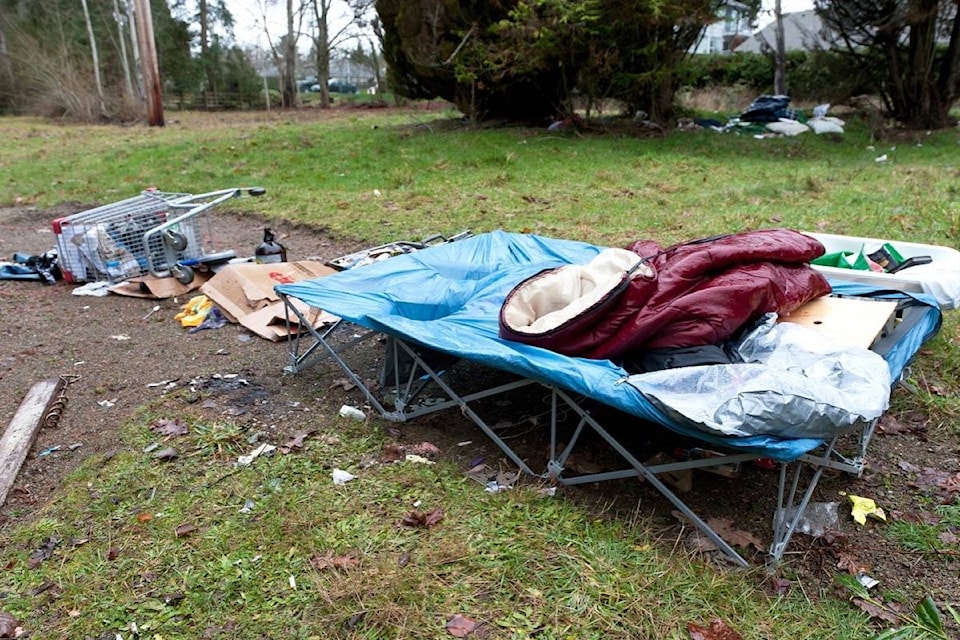A point-in-time homeless count co-ordinated by the province and performed in 12 B.C. communities has yielded stats for the Parksville Qualicum Beach area.
Forty-two people were “identified as experiencing homelessness during the count,” which took place over a 24-hour period between March 1 and April 30 from Nanoose Bay to Bowser.
In the count, people without homes had to agree to be identified as being homeless and take a survey.
This was one of the factors that Renate Sutherland (member of the Oceanside Task Force on Homelessness) said contributed to a lower number of homeless people identified than in previous point-in-time homeless counts performed by the task force.
This year, task force members and volunteers participated in the count, but did not create the terms or requirements of the count. In previous years, volunteers could include those who they observed to be homeless, said Sutherland.
“If someone was sitting around a campfire and had everything that they owned around them, but said that they didn’t want to fill out a survey, then we would still count them as somebody who was homeless, but we just wouldn’t have any demographics about them,” she said.
In 2011, the count found 43 people were considered homeless while 25 were considered at risk of homelessness. In 2013, the numbers were 49 homeless and 18 at risk.
However, point-in-time counts such as these typically yield an undercount, according to the task force’s news release on the 2018 count.
“We do feel quite confident that there is between 100 and 125 homeless folks in the area, at least, just based on shelter numbers from last winter, what other agencies are reporting, that kind of stuff,” said Sutherland.
While the count may give a low population count on homeless individuals in the area, it does give some interesting related stats.
OTHER STATS
Of the 42 individuals who agreed to fill out a survey, 73 per cent identified as male, 22 per cent as female and five per cent as another gender identity.
Twenty-five per cent were under 25-years old, while 63 per cent were between 25 and 54, and 29 per cent were 55 or older.
Sixty-three per cent said they had been homeless for up to a year, while 31 per cent said they’d been homeless for 1-5 years, three per cent said for 5-10 years and another three per cent said more than 10 years.
When asked how long they’d been in the community, 24 per cent said they’d always been here, 21 per cent said more than 10 years, 11 per cent said 5-10 years, 11 per cent said 2-5 years, eight per cent said 1-2 years, and 25 per cent said under one year.
Asked about their health, some participants said they were dealing with mental issues, a medial condition or illness, physical disability and/or addiction.
Participants identified their barriers to housing as being: rent too high, income too low, no housing available for their needs, no income or income assistance, a lack of transportation, pets or other.
Overall, Sutherland said the numbers didn’t surprise her, but said the info on how long participants have been in the community could help to possibly counter comments in the community that the homeless population is not from the Parksville Qualicum Beach area.
“Most of them are identifying as being from here, and it speaks to a lack of affordable housing here, it speaks to all kinds of stuff here, and it’s sad,” she said.
Sutherland noted that she and others were disappointed to not have been able to count a larger group of homeless youth individuals that task force members are aware of in the community. Sutherland said some people do not want to be counted as homeless, and no one is required to take the survey.
